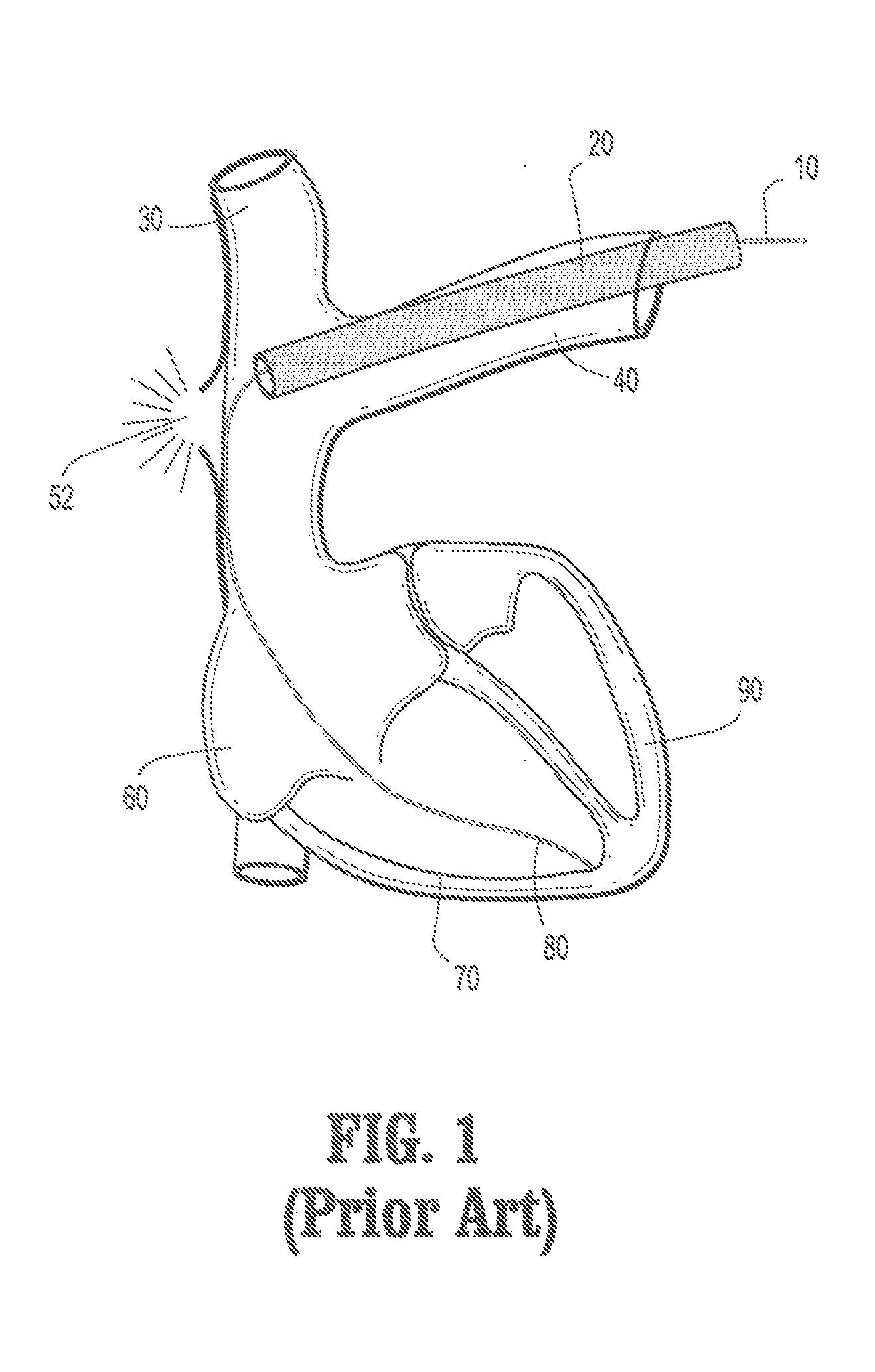Endovascular conduit device with low profile occlusion members
a conduit and low-profile technology, applied in the field of catheters and devices, can solve the problems of hemodynamic collapse, cardiac lead placement is impossible, and the complexity of the rhythm device has increased, and achieve the effect of increasing safety during cardiac lead extraction procedures
- Summary
- Abstract
- Description
- Claims
- Application Information
AI Technical Summary
Benefits of technology
Problems solved by technology
Method used
Image
Examples
Embodiment Construction
[0035]The present disclosure generally relates to the field of catheters and devices that are inserted intravascularly for the purpose of medical treatment, and more particularly, to a device that increases safety during cardiac lead extraction procedures.
[0036]In the discussion that follows, the term “proximal” refers to a portion of an endovascular conduit device that is closer to a user, and the term “distal” refers to a portion that is farther from the user. According to the present disclosure, the term “user” refers to an individual performing any vascular procedure and may include support personnel.
[0037]Reference will now be made in detail to exemplary embodiments of the present disclosure, which are illustrated in the accompanying figures. The same reference numbers in different drawings may identify the same or similar elements. In addition, the following detailed description does not limit the present disclosure.
[0038]Referring now to FIG. 2, an embodiment of an endovascul...
PUM
 Login to View More
Login to View More Abstract
Description
Claims
Application Information
 Login to View More
Login to View More - R&D
- Intellectual Property
- Life Sciences
- Materials
- Tech Scout
- Unparalleled Data Quality
- Higher Quality Content
- 60% Fewer Hallucinations
Browse by: Latest US Patents, China's latest patents, Technical Efficacy Thesaurus, Application Domain, Technology Topic, Popular Technical Reports.
© 2025 PatSnap. All rights reserved.Legal|Privacy policy|Modern Slavery Act Transparency Statement|Sitemap|About US| Contact US: help@patsnap.com



